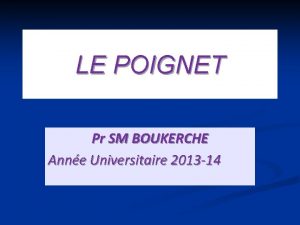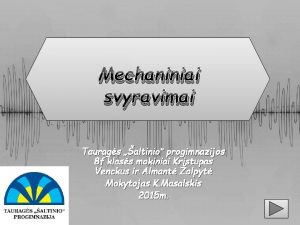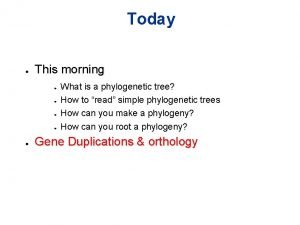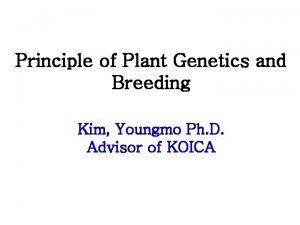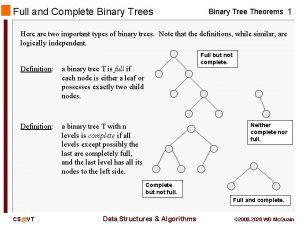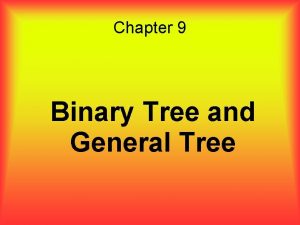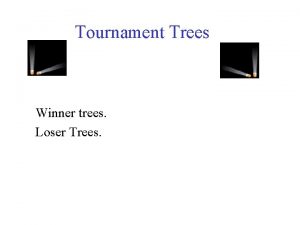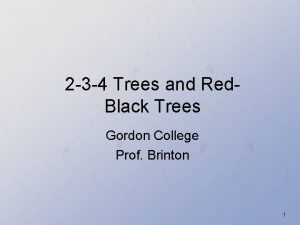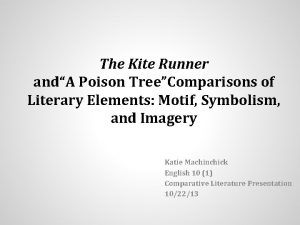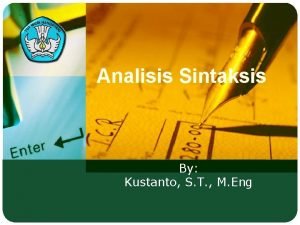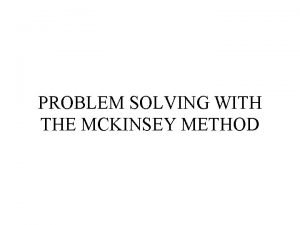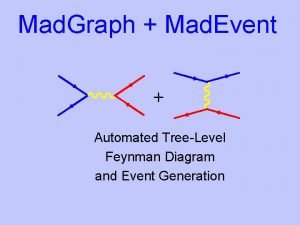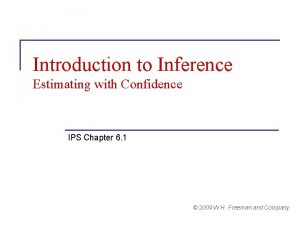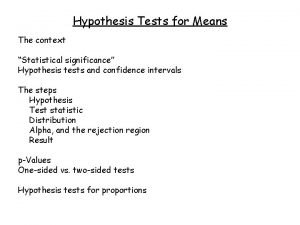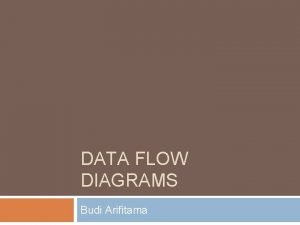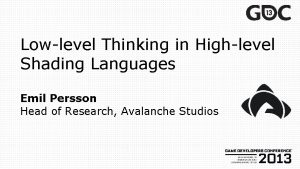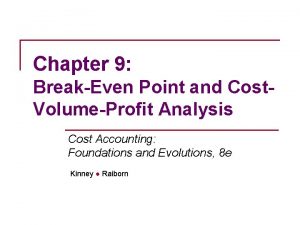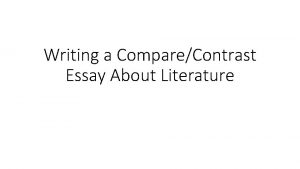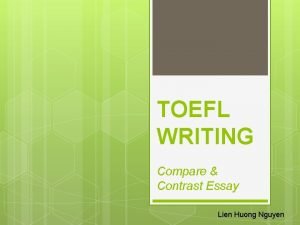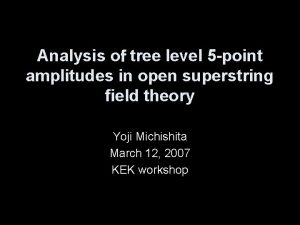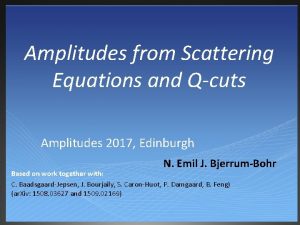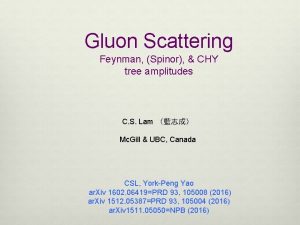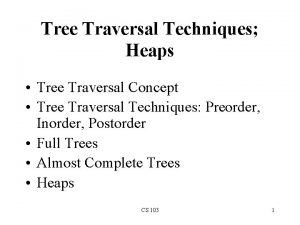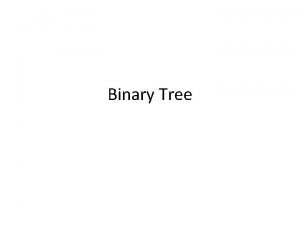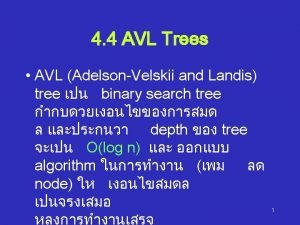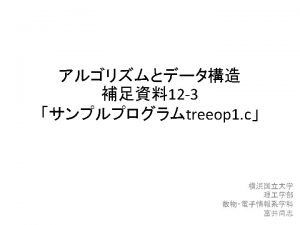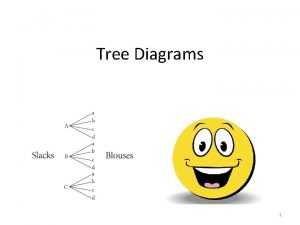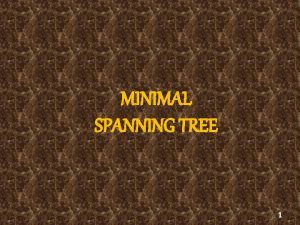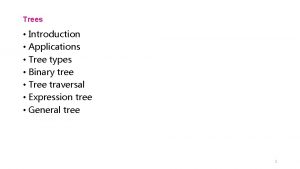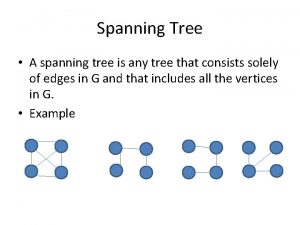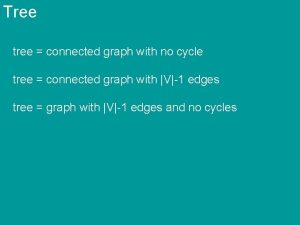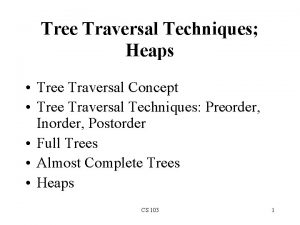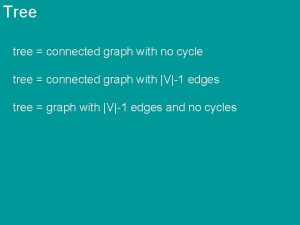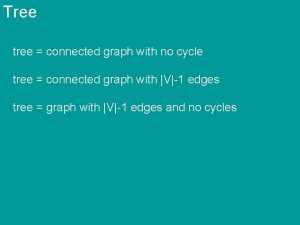Analysis o tree level 5 point amplitudes in





































- Slides: 37

Analysis of tree level 5 -point amplitudes in open superstring field theory Yoji Michishita March 12, 2007 KEK workshop

Contents • • • Introduction to the superstring field theory A problem in gauge fixing procedure Computation of 5 -point amplitudes 1. 2. 3. 4. 5 bosons 4 fermions and 1 boson 2 fermions and 3 bosons (order FFBBB) 2 fermions and 3 bosons (order FBFBB)

Berkovits’ open superstring field theory • • based on NSR formalism Star products: the same ones as Witten’s String fields have ghost numbers and picture numbers state space: large Hilbert space 2 gauge symmetries action: and insertions in interaction terms infinitely many higher order terms

Gauge fixing in Witten’s bosonic string field theory To compute amplitudes, we have to fix the gauge symmetry. gauge fixing condition: Siegel gauge (Other conditions: Asano-Kato (2006), Schnabl gauge (2005), modified Schnabl gauge (Nakayama-Fuji-Suzuki 2006) ) Ordinary Faddeev-Popov procedure does not work: Introduction of a ghost-antighost pair does not fix the gauge completely. ) ghost of ghost, ghost of ghost……

Application of Batalin-Vilkovisky (BV) formalism “fields” original field “antifields” spectrum: as in the 1 st quantized formulation Physics must be independent of gauge fixing condition. ) (classical) master equation result action: original one with ghost number restriction removed

Gauge fixing in Berkovits’ superstring field theory gauge fixing condition: Analogy to the bosonic case: “fields” “antifileds” original field picture number fixed )1 st quantized spectrum reproduced action: original one with ghost number restriction removed?

Then… cubic terms reproduce 3 -point on-shell 1 st quantized amplitudes. seems quite natural, and no other choice. However, cubic contribution to the classical master equation ) BV formalism does not work ! different way of applying BV formalism? or other way of gauge fixing? At present we have no justification of the “gauge fixed” system.

But…. People do not care: Calculation of 4 -point amplitudes Berkovits-Echevarria(1999), Berkovits-Schnabl(2003), Y. M. (2004), Fuji-Nakayama-Suzuki(2006) ) 1 st quantized on-shell amplitudes reproduced ! It seems that we are on the right track. Further check: calculation of 5 -point amplitudes

Calculation of on-shell amplitudes: Generalities • Bosonic string Expression expected to be reproduced Propagator = : inserting a strip with the length : Beltrami differential insertion

UHP

• Theorem: Schwinger parameters for Riemann surfaces made of the propagators and Witten type 3 -point vertices form a single cover of the moduli space (Zwiebach) )1 st quantized on-shell amplitudes reproduced • Superstring case Expression expected to be reproduced: – Picture numbers adjusted by – superfluous removed by Propagator: Infinitely many interaction vertices with and insertions

and should be relocated to adjust picture numbers. Those may hit and remove Number of propagators reduced )correspond to zero length propagators )should be canceled by diagrams with higher order vertices. This is the reason why the superstring field theory has higher order vertices.

5 -point amplitude: 5 bosons • 1 st quantized amplitude Let us see if our “gauge fixed” system reproduce this.

• Diagrams with 2 propagators • Diagrams with 1 propagator • Diagrams with no propagator

We expect that 1. Each gives one of terms in and extra terms with 1 propagator through relocating and. 2. Those extra terms and terms with no propagator. 3. Those terms cancel Let us compute are combined into first.

expected terms with 1 propagator

• Other : cyclic permutations in should sum up to terms with no propagator.

The sum is

Then 1 st quantized amplitude reproduced !

How to describe R-sector • Classical description (Y. M. 2004) R-sector string field + additional field Action • + constraint Naïve inference of Feynman Rules 1. Ghost number restriction removed 2. Propagator 3. External on-shell replaced by 4. Interaction vertices: higher terms in the action

We have to impose the constraint on the interaction vertices. Here we naively impose the linearized constraint i. e. and is replaced by Then… Correctness of cubic and quartic vertices has been confirmed by calculating 4 -point amplitudes. 5 -point vertices correct?

5 -point amplitude: 4 fermions and 1 boson • 1 st quantized amplitude

• Diagrams with 2 propagators • Diagrams with 1 propagator None • Diagrams with no propagator None Used vertices:

• Expectation 1. Each diagram gives one of terms in the 1 st quantized amplitude and extra terms with 1 propagator. 2. Those extra terms cancel each other. expected term Terms with 1 propagator

As is expected, terms with 1 propagator cancel, and remaining terms reproduce the 1 st quantized amplitude ! Therefore seems correct.

5 -point amplitude: 2 fermions and 3 bosons in the order FFBBB • 1 st quantized amplitude

• Diagrams with 2 propagators • Diagram with 1 propagator • Diagram with no propagator

• Expectation 1. Each gives one of terms in and extra terms with 1 propagator through relocating and. 2. Those extra terms and into terms with no propagator. 3. Those terms cancel are combined

expected term Terms with 1 propagator

Terms with 1 propagator in should sum up to terms with no propagator. The sum is as expected. However, Should be modified to ? ? ?

5 -point amplitude: 2 fermions and 3 bosons in the order FBFBB • 1 st quantized amplitude

• Diagrams with 2 propagators • Diagrams with 1 propagator None • Diagrams with no propagator

• Expectation 1. Each gives one of terms in the 1 st quantized amplitude and extra terms with 1 propagator through relocating and. 2. Those extra terms sum up to terms with no propagator. 3. Those cancel.

expected term Terms with 1 propagator

Terms with 1 propagator in should sum up to terms with no propagator. The sum is as expected. However, Should be modified to ? ? ?

Summary • Naïve gauge fixing procedure using the unfixed action with ghost number restriction removed, does not fit BV formalism. • Nevertheless it reproduces the 1 st quantized amplitude with 5 bosons through many nontrivial cancellations. • For 5 -point amplitudes with fermions, we have found some discrepancies, and those are remedied by changing coefficients of 5 -point vertices.

Discussion • Do we have to consider another way of applying BV formalism, or have to invent new gauge fixing procedure to justify our system? How can we define observables? • Should on-shell amplitudes coincide with those of the 1 st quantization at all? • Discrepancies in amplitudes with fermions: Does it indicate failure of our gauge fixing procedure, or subtlety of imposing constraints to the vertices? • Loop contributions: quantum corrected vertices needed to satisfy quantum master equation?
 Glene antébrachiale
Glene antébrachiale Mechaniniai svyravimai
Mechaniniai svyravimai Species tree
Species tree Foragry
Foragry Full binary tree theorem
Full binary tree theorem Problem tree
Problem tree Difference between general tree and binary tree
Difference between general tree and binary tree Winner tree and loser trees
Winner tree and loser trees Threaded tree
Threaded tree Loser tree algorithm
Loser tree algorithm 2-3-4 tree to red black
2-3-4 tree to red black Literary devices in the kite runner
Literary devices in the kite runner Btree simulation
Btree simulation Example of a problem tree
Example of a problem tree Problem tree and objective tree
Problem tree and objective tree H-tree clock tree synthesis
H-tree clock tree synthesis Parse tree vs syntax tree
Parse tree vs syntax tree How about the orchid to a tree is a tree benefited
How about the orchid to a tree is a tree benefited Hypothesis tree example
Hypothesis tree example Tree-level feynman diagram
Tree-level feynman diagram Christmas tree bullet points
Christmas tree bullet points Molecular level vs cellular level
Molecular level vs cellular level Isis protocol
Isis protocol How to interpret confidence intervals example
How to interpret confidence intervals example Isis level 1 vs level 2
Isis level 1 vs level 2 What is the interpretation of a 96 confidence level
What is the interpretation of a 96 confidence level Confidence level and significance level
Confidence level and significance level Bus garage repair dfd
Bus garage repair dfd Level security
Level security Costa question levels
Costa question levels Thread-level parallelism
Thread-level parallelism Low-level thinking in high-level shading languages
Low-level thinking in high-level shading languages Pfp cut off
Pfp cut off Total fixed cost formula
Total fixed cost formula 2 point perspective box
2 point perspective box Point by point block method
Point by point block method How to write compare and contrast essay
How to write compare and contrast essay Block arrangement essay
Block arrangement essay
